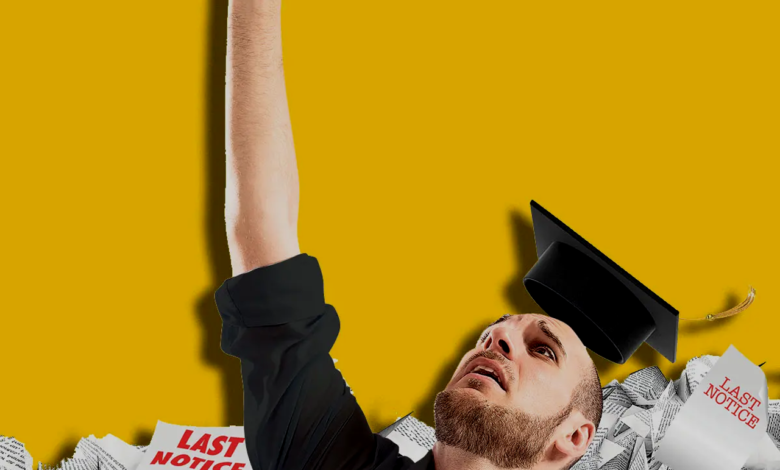
Student loan debt in the USA continues to be a pressing issue for millions of Americans, shaping the financial futures of individuals and the broader economy. As we approach 2025, the landscape of student loan debt is evolving, with new policies, repayment options, and economic factors influencing borrowers. For many, student loans are a necessary investment in education and career advancement, but the burden of repayment can be overwhelming. This article delves into the current state of student loan debt in the USA, exploring its causes, impacts, and potential solutions. Whether you’re a recent graduate, a parent, or a policymaker, understanding the complexities of student loan debt in 2025 is crucial for navigating this financial challenge.
The Current State of Student Loan Debt in 2025
As of 2025, student loan debt in the USA has reached unprecedented levels, with over 45 million borrowers collectively owing more than $1.8 trillion. This staggering figure underscores the scale of the crisis, which affects not only recent graduates but also older adults who are still paying off loans from decades ago. The rising cost of higher education, coupled with stagnant wages and inflation, has made it increasingly difficult for borrowers to manage their debt. Federal student loans account for the majority of this debt, but private loans also play a significant role, often with higher interest rates and fewer repayment options.
The economic impact of student loan debt is far-reaching. For many borrowers, the burden of monthly payments limits their ability to save for retirement, buy homes, or start businesses. This, in turn, has broader implications for the economy, as reduced consumer spending and investment can slow economic growth. Additionally, the psychological toll of carrying significant debt can lead to stress, anxiety, and other mental health issues. As we move further into 2025, it is clear that student loan debt is not just a personal financial issue but a societal one that requires comprehensive solutions.
Causes of the Student Loan Debt Crisis
Several factors have contributed to the student loan debt crisis in the USA. One of the primary drivers is the rising cost of higher education. Over the past few decades, tuition fees at both public and private institutions have skyrocketed, far outpacing inflation and wage growth. This has forced students to borrow more to cover the cost of their education. Additionally, the decline in state funding for public universities has shifted the financial burden onto students and their families.
Another contributing factor is the lack of financial literacy among borrowers. Many students take out loans without fully understanding the terms, interest rates, or repayment options. This lack of awareness can lead to poor financial decisions, such as borrowing more than necessary or failing to explore alternative funding sources like scholarships or grants. Furthermore, the complexity of the student loan system, with its myriad of repayment plans and forgiveness programs, can be overwhelming for borrowers, making it difficult to navigate and manage their debt effectively.
The Impact of Student Loan Debt on Borrowers
The impact of student loan debt on borrowers is profound and multifaceted. For recent graduates, the burden of debt can delay major life milestones, such as buying a home, getting married, or starting a family. The high monthly payments can consume a significant portion of their income, leaving little room for savings or discretionary spending. This financial strain can also affect career choices, as borrowers may feel pressured to pursue higher-paying jobs rather than following their passions or contributing to public service.
Older borrowers face unique challenges as well. Many are still paying off loans well into their 40s and 50s, which can interfere with their ability to save for retirement. The stress of carrying debt for decades can take a toll on mental health, leading to anxiety, depression, and other issues. Additionally, defaulting on student loans can have severe consequences, including damaged credit scores, wage garnishment, and even the loss of professional licenses. As the student loan debt crisis continues to grow, it is essential to address these challenges and provide relief to borrowers.
Government Policies and Repayment Options in 2025
In response to the student loan debt crisis, the federal government has implemented several policies and repayment options aimed at providing relief to borrowers. One of the most significant developments is the expansion of income-driven repayment (IDR) plans. These plans cap monthly payments at a percentage of the borrower’s discretionary income and offer loan forgiveness after 20 to 25 years of consistent payments. In 2025, new IDR plans have been introduced, offering even lower monthly payments and faster forgiveness timelines for low-income borrowers.
Another key policy is the Public Service Loan Forgiveness (PSLF) program, which forgives the remaining balance on federal student loans after 10 years of qualifying payments for those working in public service jobs. Recent reforms have made it easier for borrowers to qualify for PSLF, addressing previous issues with program administration and eligibility. Additionally, the Biden administration has continued to push for broader student loan forgiveness, with proposals to cancel a portion of federal student loan debt for all borrowers. While these efforts have faced legal and political challenges, they reflect a growing recognition of the need for systemic change.
Private Student Loans and Their Role in the Crisis
While federal student loans dominate the conversation, private student loans also play a significant role in the debt crisis. Unlike federal loans, private loans are issued by banks, credit unions, and other financial institutions, often with higher interest rates and fewer borrower protections. In 2025, private student loan debt has continued to grow, particularly among students attending expensive private colleges or graduate programs.
One of the main challenges with private student loans is the lack of flexible repayment options. Borrowers are typically required to begin repayment immediately after graduation, regardless of their financial situation. Additionally, private loans are not eligible for federal repayment plans or forgiveness programs, leaving borrowers with fewer options for relief. For those struggling to make payments, refinancing or consolidating private loans may be an option, but this often requires a strong credit history and stable income. As the student loan debt crisis persists, addressing the challenges associated with private loans will be crucial.
The Role of Higher Education Institutions
Higher education institutions also bear responsibility for the student loan debt crisis. The rising cost of tuition, coupled with the increasing reliance on student loans, has created a system where many students graduate with significant debt. In 2025, some colleges and universities have taken steps to address this issue by increasing financial aid, reducing tuition costs, or offering income-share agreements (ISAs) as an alternative to traditional loans.
ISAs allow students to finance their education in exchange for a percentage of their future income for a set period. While this model has the potential to reduce the burden of debt, it also raises concerns about equity and long-term financial impact. Additionally, some institutions have focused on improving financial literacy and counseling services to help students make informed decisions about borrowing. However, more needs to be done to ensure that higher education remains accessible and affordable for all students.
The Future of Student Loan Debt in the USA
As we look to the future, the student loan debt crisis in the USA shows no signs of abating. Without significant policy changes and systemic reforms, millions of borrowers will continue to struggle with the burden of debt. However, there is hope on the horizon. Advocacy groups, policymakers, and educators are increasingly calling for solutions such as tuition-free college, expanded loan forgiveness programs, and increased funding for public universities.
Technological advancements may also play a role in addressing the crisis. For example, the use of artificial intelligence and data analytics could help borrowers better understand their repayment options and make informed financial decisions. Additionally, the growing popularity of online education and alternative credentialing programs may provide more affordable pathways to career advancement. While the road ahead is challenging, a combination of policy changes, institutional reforms, and innovative solutions could pave the way for a brighter future.
Read More: Best Budget Laptops for Students & Professionals (2025 Guide)
Conclusion
Student loan debt in the USA remains a critical issue in 2025, affecting millions of borrowers and shaping the nation’s economic landscape. The rising cost of higher education, coupled with stagnant wages and limited repayment options, has created a crisis that demands urgent attention. While government policies and institutional reforms offer some relief, more comprehensive solutions are needed to address the root causes of the problem and provide lasting relief to borrowers.
As we move forward, it is essential to prioritize accessibility, affordability, and equity in higher education. By investing in innovative solutions, expanding financial literacy, and advocating for systemic change, we can create a future where student loan debt no longer stands in the way of opportunity and success. The journey toward resolving the student loan debt crisis will not be easy, but with collective effort and determination, it is a challenge we can overcome.
FAQs
What is the total student loan debt in the USA in 2025?
As of 2025, total student loan debt in the USA has surpassed $1.8 trillion, affecting over 45 million borrowers.
What are income-driven repayment plans?
Income-driven repayment plans cap monthly payments at a percentage of the borrower’s discretionary income and offer loan forgiveness after 20 to 25 years of payments.
Can private student loans be forgiven?
Private student loans are not eligible for federal forgiveness programs, but some lenders may offer relief options such as refinancing or temporary forbearance.
How does student loan debt affect the economy?
Student loan debt reduces consumer spending, limits homeownership, and delays retirement savings, negatively impacting economic growth.
What are some proposed solutions to the student loan debt crisis?
Proposed solutions include tuition-free college, expanded loan forgiveness programs, and increased funding for public universities.








2 Comments